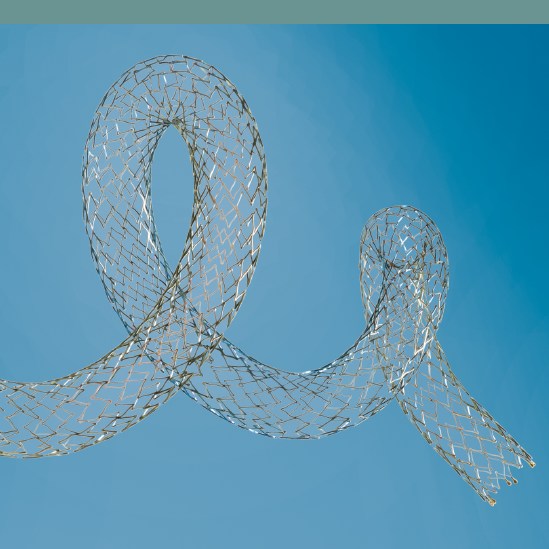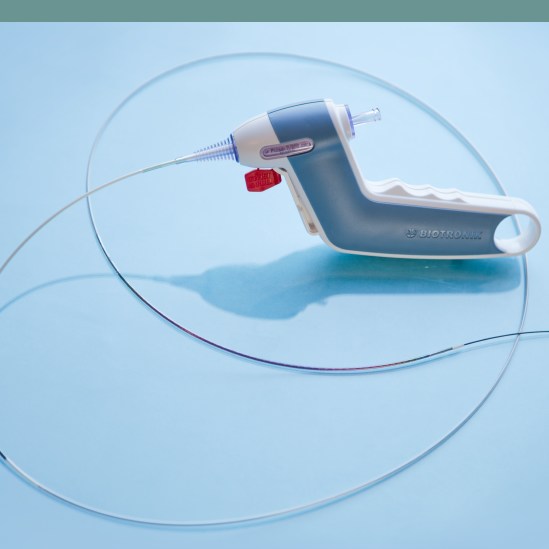Product Details

Tri-Axial OuterShaft
Isolates retractable shaft from friction caused by introducer valve, aimed at ensuring precision-like implantation accuracy.

Stent Designed for SFA
- Peak-to-valley design and S-articulating connecting bars provide multi-directional flexibility and avoid fish-scaling in mobile vessel architecture.
- A segmented design with thin struts provides low Chronic Outward Force (COF)1 sufficient to maintain vessel scaffolding even in calcified lesions (4EVER study)2. High COF has been shown to result in higher rates of neointimal hyperplasia.3
- Stent lengths up to 200 mm for covering long lesions with a single stent.

One-Handed Stent Release
Ergonomically designed for a comfortable and stable handling, enhancing ability to immobilize complete system during stent deployment.
- Safety tab: Avoids accidential stent deployment
- Trigger: For controlled stent delivery

Low Chronic Outward Force
Low Chronic Outward Force (COF)1 sufficient to maintain vessel scaffolding even in calcified lesions (4EVER study2). As shown in the graphic, COF of Pulsar stents increases less than many competitor stents when oversized, thus potentially reducing inflammatory response and restenosis3.
Technical Data
| Pulsar-35 Stent | |
|---|---|
| Catheter type |
OTW |
| Recommended guide wire |
0.035" |
| Stent material |
Nitinol |
| Strut thickness |
140 μm |
| Strut width |
85 μm |
| Stent coating |
proBIO (amorphous silicon carbide) |
| Stent markers |
6 gold markers each end |
| Sizes |
ø 5.0 - 7.0 mm; L: 30 - 200 mm |
| Proximal shaft |
6 F, hydrophobic coating |
| Usable length |
90 and 135 cm |
Ordering Information
Contact
1 BIOTRONIK data on file (IIB report (P) 71/2011-1).
2 4EVER study. Bosiers. M. 24m results presented CIRSE 2013; Deloose K. 24m results presented LINC 2014.
3 -Ballyk PD. Intramural stress increases exponentially with stent diameter: a stress threshold for neointimal hyperplasia. J Vasc Interv Radiol. 2006 Jul;17(7):1139-45.
-Freeman JW, Snowhill PB, Nosher JL. A link between stent radial forces and vascular wall remodeling: the discovery of an optimal stent radial force for minimal vessel restenosis. Connect Tissue Res. 2010 Aug;51(4):314-26.
-Zhao HQ, Nikanorov A, Virmani R, Jones R, Pacheco E, Schwartz LB. Late stent expansion and neointimal proliferation of oversized Nitinol stents in peripheral arteries. Cardiovasc Intervent Radiol. 2009 Jul;32(4):720-6".


